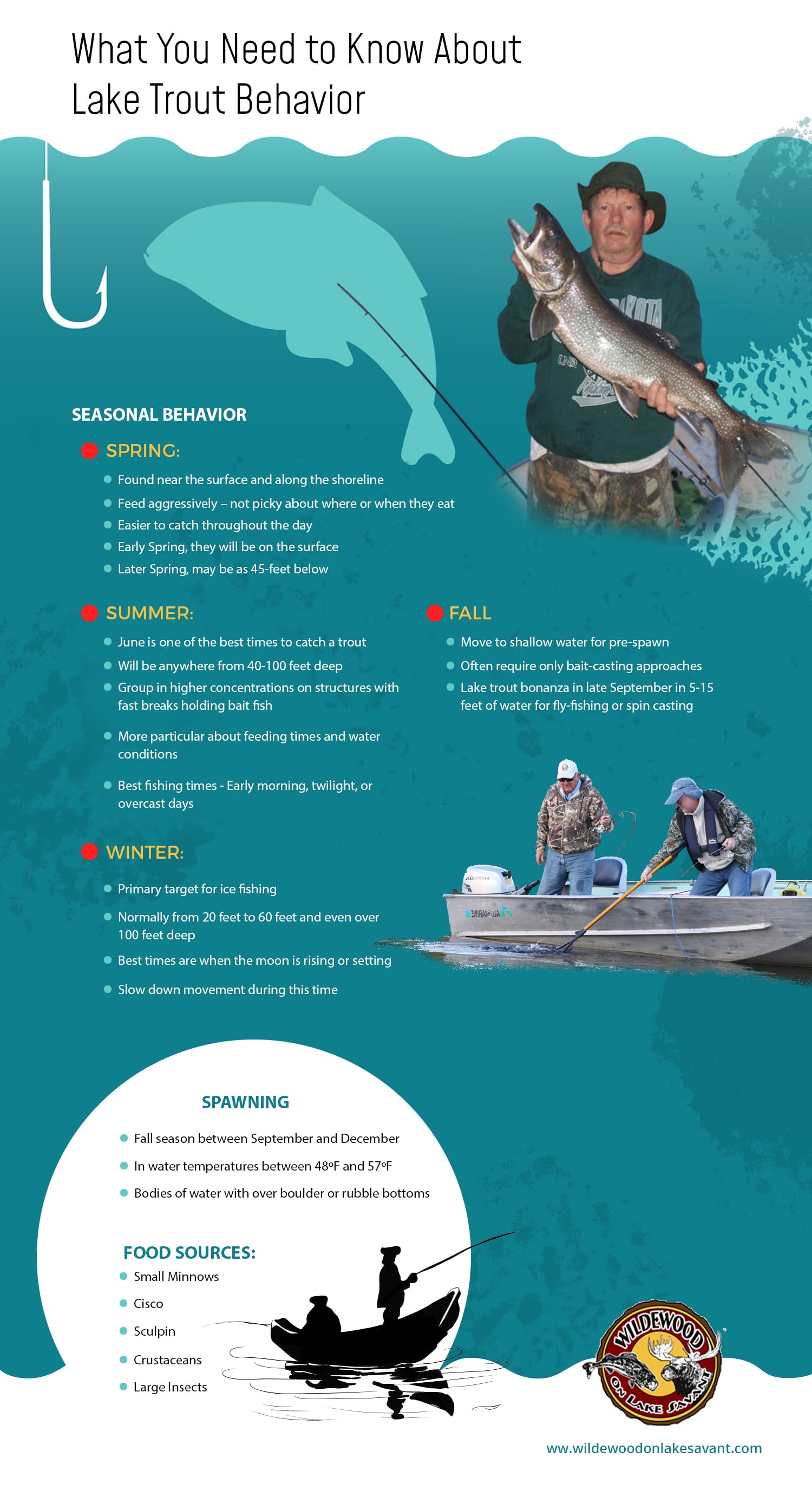SUMMARY:
Knowing the behaviors of Lake Trout, their feeding habitats and preferred habitats, will help you catch that big fish. The best way to find a good location is to start with the lakes that are managed for trophy fish, like Lake Savant in Ontario, Canada.
SEASONAL BEHAVIOR
SPRING:
- Found near the surface and along the shoreline
- Feed aggressively – not picky about where or when they eat
- Easier to catch throughout the day
- Early Spring, they will be near the surface
- Later Spring, may be as deep as 45-feet below
SUMMER:
- June is one of the best times to catch a trout
- Will be anywhere from 40-100 feet deep
- Group in higher concentrations on structures with fast breaks holding bait fish
- More particular about feeding times and water conditions
- Best fishing times – Early morning, twilight, or overcast days
FALL:
- Move to shallow water for pre-spawn
- Often require only bait-casting approaches
- Lake trout bonanza in late September in 5-15 feet of water for fly-fishing or spin casting
WINTER:
- Primary target for ice fishing
- Normally from 20 feet to 60 feet and even over 100 feet deep
- Best times are when the moon is rising or setting
- Slow down movement during this time
SPAWNING
- Fall season between September and December
- In water temperatures between 48ºF and 57ºF
- Bodies of water with over boulder or rubble bottoms
FOOD SOURCES:
- Small Minnows
- Cisco
- Sculpin
- Crustaceans
- Large Insects


